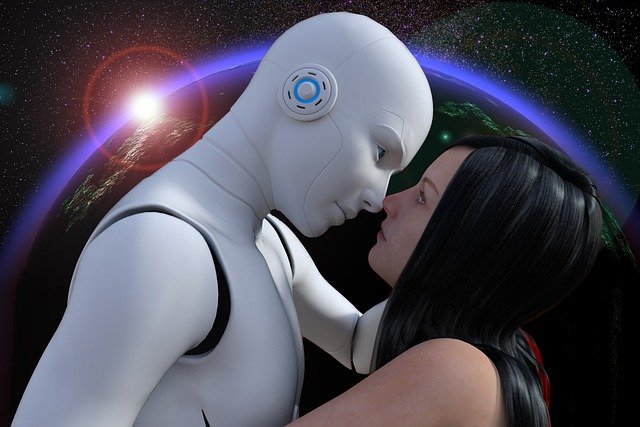
Synthetic humanoids have long been a popular culture fad. The number of people who form romantic attachments with non-human robots has risen as loneliness has increased.
This may be due in part to how loneliness changes social cognition, according to research. People who are lonely tend to anthropomorphize objects, attributing human-like characteristics to them.
This may lead people to form attachments with objects that they see as potential companions.
Loneliness and robotic romance
Loneliness is often cited as a key factor in the development of romantic relationships with robots.
In a study of Japanese people who form intimate relationships with robotic humanoid companions, participants reported that they felt less lonely when they were interacting with their robot partners.
The majority of participants also said that they would feel more comfortable confiding in their robot partner than in a human one.
This tendency to anthropomorphize may also lead people to form attachments with objects that they see as potential companions.
In a study of American adults, participants were more likely to form attachments to robots that resembled humans (i.e., had a humanoid form) than those that did not.
Participants were also more likely to attribute human-like characteristics to humanoid robots than to non-humanoid robots.
The rise of synthetic humanoids
The number of people who form intimate relationships with non-human robots has risen as loneliness has increased. This may be due in part to how loneliness changes social cognition, according to research. People who are lonely tend to anthropomorphize objects, attributing human-like characteristics to them. This may lead people to form attachments with objects that they see as potential companions.
Parasocial relationships
People often form parasocial relationships with celebrities and fictional characters. These are one-sided relationships in which the fan feels a strong emotional connection to the celebrity or character, but the celebrity or character is unaware of the fan’s existence.
Parasocial relationships can be positive or negative. Positive parasocial relationships are characterized by feelings of admiration and support, while negative parasocial relationships are characterized by feelings of envy and hostility.
Some people form parasocial relationships with robots, treating them as if they were celebrities or fictional characters.
In a study of Japanese people who form intimate relationships with robotic humanoid companions, participants reported feeling a strong emotional connection to their robot partners.
The majority of participants said that they would feel more comfortable confiding in their robot partner than in a human one.
This tendency to anthropomorphize may also lead people to form attachments with objects that they see as potential companions.
In a study of American adults, participants were more likely to form attachments to robots that resembled humans (i.e., had a humanoid form) than those that did not.
Participants were also more likely to attribute human-like characteristics to humanoid robots than to non-humanoid robots.
The benefits of robotic companionship
Robotic companionship can provide some benefits for people who are lonely. In a study of Japanese people who form intimate relationships with robotic humanoid companions, participants reported feeling less lonely when they were interacting with their robot partners.
The majority of participants also said that they would feel more comfortable confiding in their robot partner than in a human one.
Robotic companionship can also provide some benefits for people who are not lonely.
In a study of American adults, participants who were given a robotic companion reported feeling less bored and more engaged with their surroundings. They also felt more positive about their future and were more likely to report feeling happy.
Robotic companionship may also have some benefits for people with mental health conditions.
In a study of people with anxiety disorders, those who received therapy from a robotic companion reported feeling less anxious and more comfortable with social interactions.
- Related post: How To Overcome Social Anxiety And Engage With More People
- Related post: The Science Behind Happy Relationships
The disadvantages of robotic companionship
Robotic companionship may have some disadvantages for people who are lonely.
In a study of Japanese people who form intimate relationships with robotic humanoid companions, participants reported feeling more self-conscious when they were around other people after interacting with their robot partner.
The majority of participants also said that they would feel more comfortable confiding in their robot partner than in a human one.
Robotic companionship may also have some disadvantages for people who are not lonely.
In a study of American adults, participants who were given a robotic companion reported feeling more self-conscious and less connected to other people.
They also felt more likely to report feeling anxious and stressed.
So far, research on the benefits and disadvantages of robotic companionship has been limited to small studies with mixed results.
More research is needed to understand the potential benefits and disadvantages of this type of relationship.
What does the research suggest?
The research suggests that loneliness may lead people to form attachments with robotic companions. These attachments may be driven by the tendency to anthropomorphize objects, which leads people to attribute human-like characteristics to them.
The rise in the popularity of synthetic humanoids may also be due in part to the increasing loneliness of society.



